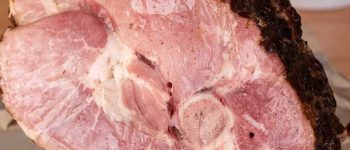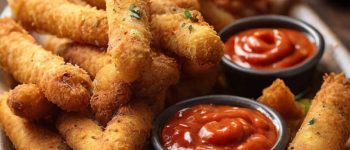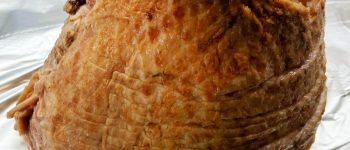If you’ve ever dreamt of becoming a professional cook or chef, you have to start somewhere. But even if your goal is simply to learn the basics of cooking for yourself, you’ve come to the right place! Learning how to cook not only allows you to save money by preparing meals at home but also gives you the power to control what goes into your food, leading to a healthier and more balanced diet. And as your skills grow, you’ll soon be able to share the love of cooking with friends and family, creating memorable moments around the dinner table. Let this guide be your stepping stone to a future of fine cooking!
Make Sure You Have Essential Kitchen Tools and Utensils
To embark on your culinary journey, it’s essential to equip yourself with the right tools. You don’t need anything fancy to start, but there are a few basics you’ll need. A good set of knives is crucial, including a chef’s knife, paring knife, and serrated knife. Don’t forget a cutting board for easy chopping. As for cookware, invest in stainless steel pots and pans, which are versatile for most purposes. Start with a stockpot, sauté pan, skillet, and saucepan. Additionally, a nonstick pan for eggs and delicate seafood and sheet pans for roasting or baking will come in handy. Other essential items include measuring cups, spoons, mixing bowls, a colander, a vegetable peeler, a grater, a whisk, spatulas, and a can opener. As you progress in your cooking journey, you can add specialized items like a sous vide, pressure cooker, or immersion blender, but for now, the basics will suffice!
Stock Up on Basic Ingredients
While most perishable items for recipes are purchased as needed, it’s wise to keep a stock of pantry staples like oils, dry goods, and seasonings. Fat is an essential ingredient in any cuisine, and options like olive oil, vegetable oil, coconut oil, butter, or lard each have their ideal uses and flavor profiles. Don’t forget to have herbs and spices on hand, such as garlic, onion powder, oregano, paprika, and cumin, which can elevate the flavor of any dish. And of course, salt is a must-have, bringing out the best in flavors. There are various types of salt available, but for beginners, versatile kosher salt and sea salt are excellent choices.
Practice the Fundamental Cooking Methods and Techniques
Cooking is an art that encompasses a wide range of techniques. Boiling, baking, grilling, frying, sautéing, and steaming are just a few examples of the methods used to achieve different results. Boiling is the simplest technique, involving cooking food in hot liquid like water or stock. Baking utilizes dry heat uniformly applied to food in an oven, while roasting uses direct heat from either an oven or an open flame. Grilling is similar to roasting but at much higher temperatures. Frying involves cooking food in hot oil, while sautéing is a lighter fry in just a bit of oil on the stovetop. Finally, steaming allows food to cook using the moist heat from boiling or simmering water without direct contact with the liquid. Beyond these traditional methods, there are also more modern techniques like sous vide, which involves cooking food in an airtight bag at low temperatures in a water bath. The best way to master these techniques is to practice them! Look for recipes that utilize each method so you can become familiar with their nuances.
Following Recipes and Understanding Measurements
While expert cooks can whip up delicious meals without a recipe, beginners typically rely on them to get started. Following recipes from reputable sources can save you from trial and error. Here’s what you need to know:
Read the Whole Recipe
Before you dive into cooking, take the time to read the entire recipe carefully. It’s heartbreaking to find out halfway through that your meat needs to marinate overnight. Reading the entire recipe will ensure you have all the tools and ingredients needed and prevent any unexpected timing surprises that could lead to a late-night meal.
Make Sure You Know What Those Abbreviations Mean
Recipes often use shorthand, so understanding measurement abbreviations is crucial. Mixing up teaspoons and tablespoons can lead to disaster. Familiarize yourself with common measurement abbreviations to avoid mishaps. Additionally, knowing conversions, such as the equivalent measurements for teaspoons and tablespoons or cups and pints, will also be helpful. Using dry measuring cups for dry ingredients and liquid measuring cups for wet ingredients, and leveling off excess dry ingredients with a back of a knife or a metal spatula, ensures accurate measurements. Some recipes, especially those involving baking and pastry, rely on measurements by weight for the highest accuracy. Differentiating between fluid ounces (a volume measurement) and ounces (a weight measurement) is essential.
Prep Your Ingredients Before You Start Cooking
One common mistake for beginners is underestimating the time it takes to do prep work. Multitasking while cooking can easily lead to overcooked meat and undercooked vegetables. To avoid this, adopt the practice of mise en place, which means “everything in its place.” This involves gathering all your tools, measuring out ingredients, and doing any necessary prep work beforehand, such as chopping vegetables or trimming meat. When your ingredients are prepped in advance, cooking becomes a breeze.
Avoid These Common Cooking Mistakes
While recipes provide guidance, they don’t cover every detail. Here are some common mistakes to avoid for better cooking results:
Underestimating How Long You’ll Need
Cooking takes time, and it’s easy to overlook the prep work and clean-up time involved. Taking these factors into account when estimating your meal’s total time will prevent cooking stress and ensure that you and your guests don’t end up waiting longer than anticipated. Practicing good time management, such as cleaning as you go, can help shorten the timeline.
Overcrowding Your Pan
Overcrowding your cooking pan is a common mistake that can lead to unevenly cooked food. Make sure you have enough space for your ingredients to spread out, allowing them to cook properly. If needed, cook in batches to ensure even cooking and leave room for stirring or turning without making a mess.
Only Seasoning at the End
Adding salt only at the end of the cooking process may leave your dish lacking in flavor. Professional cooks sprinkle salt throughout the cooking process to enhance the taste. Salt added to meat before cooking can dissolve and be absorbed, while adding salt to raw vegetables draws out liquid for a more flavorful result. So, don’t be afraid to season your dishes at different stages of cooking for maximum flavor.
More Resources for Beginner Cooks
If you’re eager to learn more, there are additional resources that can help you on your culinary journey:
Cookbooks by Expert Chefs
Cookbooks are a fantastic resource for beginners, providing step-by-step instructions and valuable tips beyond just recipes. Look for cookbooks that cover the basics and offer insights into specific types of cooking or cuisines. They are a wealth of knowledge and can expand your understanding of cooking techniques and flavors.
An Accredited Culinary School
For a fully immersive experience taught by professional chefs, consider attending a culinary school. Culinary schools like Escoffier offer comprehensive programs in culinary arts, baking & pastry arts, and plant-based culinary arts. These programs provide foundational education in cooking techniques, advanced topics, and even business-related subjects like menu design and cost control. Accredited culinary schools have met rigorous standards, ensuring you receive a quality education. Attending culinary school can significantly accelerate your learning and open doors to a variety of culinary opportunities.
Enthusiast Cooking Classes
If you’re looking to focus on specific skills or cuisines, enthusiast cooking classes are a great option. These classes provide in-depth instruction on topics like Chinese dumplings, pizza dough, or knife skills. They allow you to delve deeper into your areas of interest and refine your culinary abilities.
Go Beyond the Basics
Mastering the basics is just the beginning of your cooking journey. There is so much more to explore, from baking and pastry to diverse cuisines and menu creation. If you’re eager to take your skills to the next level, consider the opportunities available at culinary school. At Escoffier, you can further expand your culinary knowledge, including baking and patisserie, understanding seasonal ingredients, and diving into the business aspects of the industry. The possibilities are endless!
To learn more about culinary education, check out these articles:
- What Are the Different Chef Certifications?
- Why Study at a French Culinary Institute?
- Escoffier 101: Everything You Need to Know About Culinary School
Remember, everyone’s culinary journey is unique, and your results may vary based on various factors. But with dedication, practice, and the right resources, you can become a skilled cook and embark on an exciting culinary adventure. Good luck, and have fun exploring the art of cooking!



